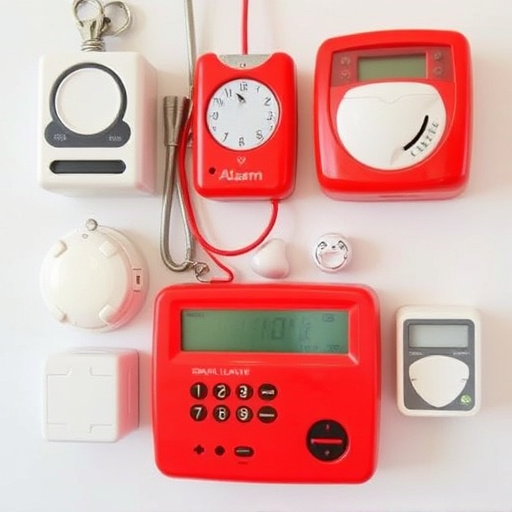Emergency phone alerts with location sharing are a double-edged sword for personal security, offering swift assistance during crises while raising concerns about user privacy and battery life. These features send exact locations to pre-selected contacts or services, aiding first responders in minimizing response times during natural disasters, medical emergencies, or crimes. However, they consume power, impacting the Personal Security Alarm Battery Life. Balancing prompt alerts with privacy protection and efficient battery management is crucial to fully harness these tools' potential.
In today’s digital age, emergency phone alerts with location sharing have emerged as a powerful tool for personal security. This feature, often integrated into existing messaging apps or dedicated safety platforms, not only notifies emergency services of your location but also enhances response times. Understanding how these alerts work and their benefits is crucial. From technical aspects like battery life and location sharing mechanisms to privacy considerations, this article explores the balance between alarm efficiency and user safety.
- Understanding Emergency Phone Alerts: How They Work and Their Benefits
- Technical Aspects: Battery Life and Location Sharing Mechanisms
- Personal Security and Privacy Considerations: Balancing Alarm Efficiency and User Safety
Understanding Emergency Phone Alerts: How They Work and Their Benefits
Emergency phone alerts with location sharing are a powerful tool for personal security. These features, often built into modern smartphones, enable users to quickly and discreetly signal for help in critical situations. When activated, the phone sends an alert to pre-selected emergency contacts or services, accompanied by the user’s exact location. This real-time data allows responders to swiftly locate and assist individuals in need, whether they’re caught in a natural disaster, facing a medical emergency, or are victims of a crime.
One significant advantage is the peace of mind it offers. Users can rest assured that their loved ones will be notified if they encounter a dangerous situation, even if they are unable to make a call themselves. Additionally, these alerts can help first responders prioritize their efforts by providing accurate, immediate information about the victim’s location. Moreover, with advancements in technology, these systems consume minimal power, ensuring a longer Personal Security Alarm Battery Life, so you’re always protected without sacrificing your device’s longevity.
Technical Aspects: Battery Life and Location Sharing Mechanisms
The effectiveness of emergency phone alerts with location sharing heavily relies on two critical technical aspects: battery life and location sharing mechanisms. In an emergency, quick response times are paramount, which means a Personal Security Alarm’s battery should be designed to withstand prolonged usage without frequent recharging. Advanced power management features, such as low-power modes and efficient algorithms, play a vital role in extending battery life during critical situations where every second counts.
Location sharing mechanisms must also be robust and accurate. Modern technologies like GPS, Wi-Fi, and cellular networks are often integrated to determine a user’s precise location. Seamless data transmission between the phone, emergency services, and recipient devices is essential to ensure timely assistance arrives at the exact location of the alarm activation. Efficient data compression techniques and secure communication protocols further enhance the reliability of this process, contributing to overall personal security.
Personal Security and Privacy Considerations: Balancing Alarm Efficiency and User Safety
Emergency phone alerts with location sharing, while a powerful tool for personal security, raise important questions about privacy and safety. As these features rely on constant connectivity and data transmission, users must consider the potential trade-off between alarm efficiency and their own safety. Every time an alert is sent, it leaves a digital trail that could expose sensitive information if accessed by unauthorized individuals.
Moreover, the battery life of devices plays a crucial role here. Continuous location sharing can significantly drain batteries, leaving users vulnerable if they’re in a situation where every bit of power matters. Thus, it’s essential to strike a balance—ensuring alerts are received promptly while preserving privacy and managing device battery life effectively. This requires careful consideration of both personal security needs and the potential privacy implications.
Emergency phone alerts with location sharing are a powerful tool for enhancing personal security. By understanding how they work, addressing technical aspects like battery life, and balancing privacy concerns, these alerts offer significant benefits in critical situations. While implementing such systems, it’s crucial to prioritize both alarm efficiency and user safety to ensure everyone can access the assistance they need when facing emergencies.
